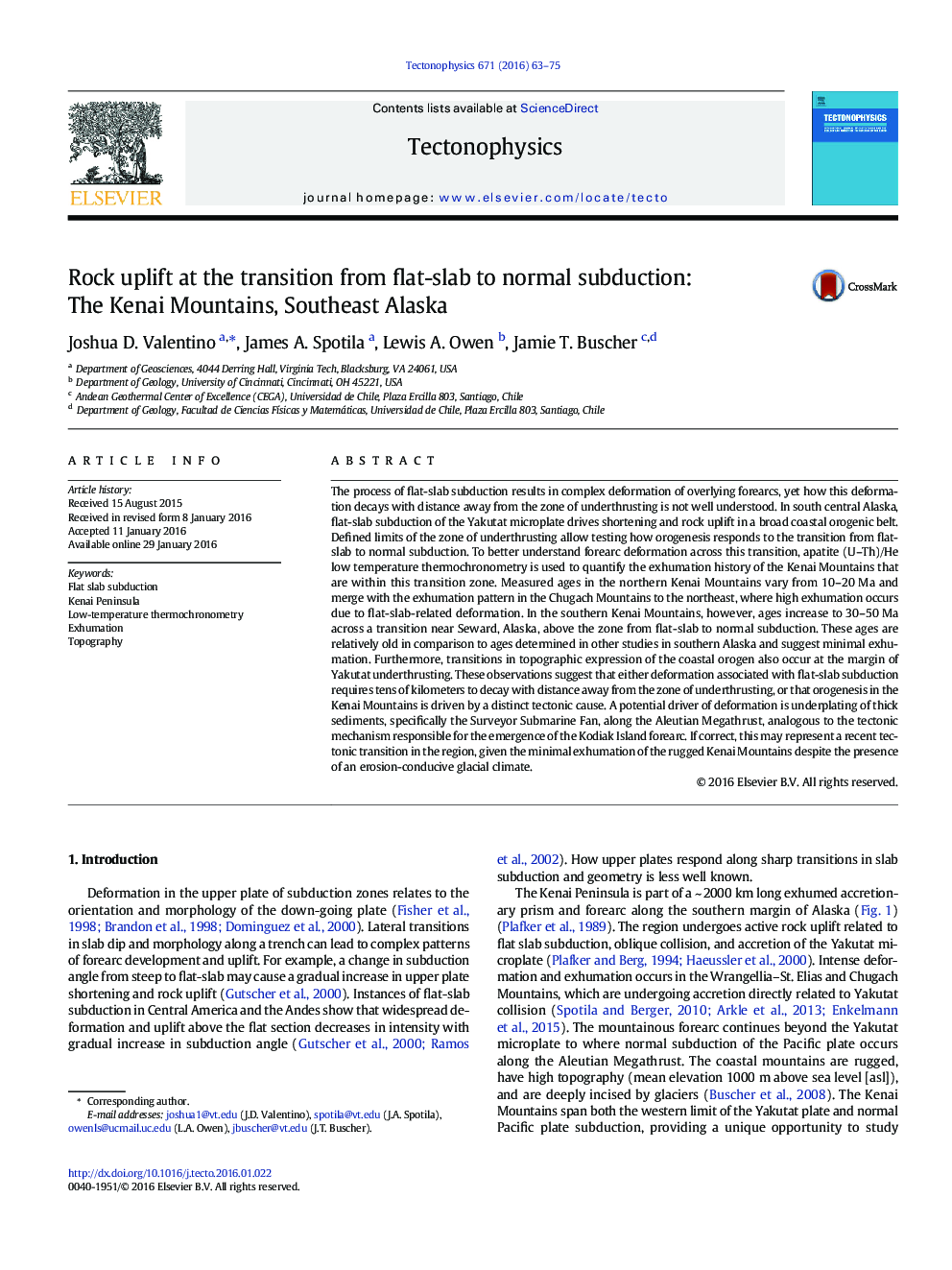| Article ID | Journal | Published Year | Pages | File Type |
|---|---|---|---|---|
| 4691325 | Tectonophysics | 2016 | 13 Pages |
•We study upper plate deformation along edge of flat slab subduction.•We provide first order constraint on exhumation of the Kenai Peninsula.•Preserved relict landscape implies little erosion or young forearc uplift.•Poor apatite quality can be remediated by increasing number of replicates.
The process of flat-slab subduction results in complex deformation of overlying forearcs, yet how this deformation decays with distance away from the zone of underthrusting is not well understood. In south central Alaska, flat-slab subduction of the Yakutat microplate drives shortening and rock uplift in a broad coastal orogenic belt. Defined limits of the zone of underthrusting allow testing how orogenesis responds to the transition from flat-slab to normal subduction. To better understand forearc deformation across this transition, apatite (U–Th)/He low temperature thermochronometry is used to quantify the exhumation history of the Kenai Mountains that are within this transition zone. Measured ages in the northern Kenai Mountains vary from 10–20 Ma and merge with the exhumation pattern in the Chugach Mountains to the northeast, where high exhumation occurs due to flat-slab-related deformation. In the southern Kenai Mountains, however, ages increase to 30–50 Ma across a transition near Seward, Alaska, above the zone from flat-slab to normal subduction. These ages are relatively old in comparison to ages determined in other studies in southern Alaska and suggest minimal exhumation. Furthermore, transitions in topographic expression of the coastal orogen also occur at the margin of Yakutat underthrusting. These observations suggest that either deformation associated with flat-slab subduction requires tens of kilometers to decay with distance away from the zone of underthrusting, or that orogenesis in the Kenai Mountains is driven by a distinct tectonic cause. A potential driver of deformation is underplating of thick sediments, specifically the Surveyor Submarine Fan, along the Aleutian Megathrust, analogous to the tectonic mechanism responsible for the emergence of the Kodiak Island forearc. If correct, this may represent a recent tectonic transition in the region, given the minimal exhumation of the rugged Kenai Mountains despite the presence of an erosion-conducive glacial climate.
